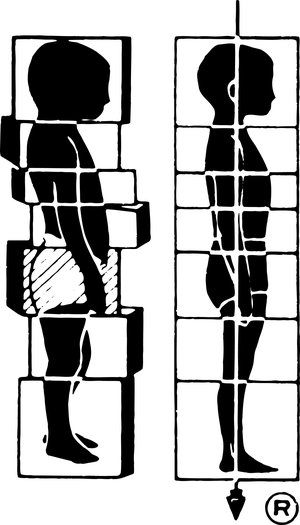Rolfing Structural Integration Can Improve...
General Benefits of Rolfing
Rolfing Structural Integration is often able to improve:
alignment
posture
movement patterns
balance
circulation
neurological functioning
flexibility
chronic pain patterns
chronic stress
energy levels
joint restrictions
Common Structural Discrepencies
Rolfing addresses and can improve common structural discrepancies and imbalances that manifest patterns such as:
excessive spinal curvature
knock knees
bow legs
anterior or posterior pelvic tilts
pelvic rotations
rounded shoulders
forward head and neck
flat feet
uneven gait
chronically tight, rigid and restricted tissues with decreased circulation
a compressed spine and “core”, etc.
More specifically, the Rolfing process can often improve the situation of individuals who have a history of:
Injury or illness that creates residual scar tissue, adhesions, or chronic postural adaptation to pain. Examples: surgery, fractures, disease.
Chronic misuse, unconscious stress and warp of the physical structure. Examples: improper exercising, faulty posture.
Emotional tension and psychological stress affecting the body as patterns of held tension, restriction of free movement, etc. Examples: teeth grinding, hunching of shoulders, restriction of breath.
Habitual activities (work, sports, etc.), repetitive stresses, and unconscious postural imitation can create aberrant movement and structural patterns. Examples: computer programmers, postal carriers, dancers, hair stylists, runners, musicians, and athletes of all types.
For Example: Back Pain
Those dissatisfied with other back pain treatments often consult a Rolfer™, whose unique premises and methods are often effective in reducing pain and dysfunction when other approaches have failed.
Low back dysfunction is a common cause of pain and disability. Though its mechanism is often unclear, evidence suggests several factors as possible contributors, including unhealed soft tissue injury, pressure on nerves, chronic muscle tension or insufficient muscle tone, insufficient circulation and fluid movement, and even emotional stress and hostility. And, outcomes of treatment — be it medication, physical therapy, exercise, chiropractic or massage — are often unsatisfactory.
Those dissatisfied with other back pain treatments often consult a Rolfer™, whose unique premises and methods are often effective in reducing pain and dysfunction when other approaches have failed. A Rolfer believes that many musculoskeletal problems can be mitigated or resolved by balancing the length and tone of soft tissues throughout the entire body. This view is crystallized in Dr. Rolf's admonition, "Where you think it is — it ain't"; in other words, the place where it hurts is not necessarily the source of the problem.
A Rolfer evaluates the client's entire body structure, considering not only the low back as the locus of the symptoms, but also the quality of support available to the low back from the pelvis, hips, legs and feet, as well as the mobility of the body segments above. Do the middle and upper back, shoulders, neck and head engage each other with well-coordinated grace? A Rolfer works with the connective tissue, which not only surrounds every muscle, joint and organ, but also functions as the body's organ of support, to balance the span and tone of the connective tissue network as a whole.
Though recipients of Rolfing Structural Integration often report mitigation of low back pain and dysfunction, scientific research concerning its effects is just beginning. Several promising hypotheses of how the Rolfer's methods might alleviate chronic musculoskeletal pain merit investigation, including:
Balanced length and tone throughout the body, including improved support from the pelvis, hips, legs and feet, and improved coordination in the mid and upper back, shoulders, neck and head, might lessen the strain the low back bears in daily activities. Perhaps reduced strain allows injured tissues to heal and reduces the odds of re-injury, which would mitigate chronic pain.
Increased pliability of the connective tissues might enhance circulation and fluid flow in regions where nociceptive amplifiers — substances that heighten and/or accelerate the brain's perception of pain — have previously accumulated.
More balanced span and tone throughout the connective tissue network might relieve nerve compression and irritation through improved alignment of joints and/or increased pliability of scar tissues that have entrapped nerves.
Greater mobility and reduced tension in the soft tissues of the low back and sacrum might facilitate relaxation, as well as reduce the intensity of negative emotions that can exacerbate the symptoms.
At this point in time, these are only theories. Good scientific research needs to be done before we know which of these effects, if any, actually do contribute to the alleviation of chronic pain. Any of these hypotheses might also account in part for the therapeutic effects of chiropractic, osteopathy, massage or acupuncture. What sets Rolfing Structural Integration apart from these other disciplines is:
its emphasis on balancing span, tone and mobility throughout the entire body,
its method of working extensively and deeply within the connective tissues to produce long-lasting improvements, and
its design as a limited intervention.
Contraindications
Rolfing is contraindicated for those with infections, fevers, acute inflammation and recent trauma. Some forms of rheumatoid arthritis, severe osteoporosis or osteomyelitis are also contraindicated.
“We don’t say that Rolfing will cure a body or change a diagnosis. What we do say is that it will always better balance a person’s body around a central vertical line in the field of gravity, so that gravity will support that person rather than tearing them down. When this happens, it relieves a lot of the stress that’s involved with a particular disability.”
-- Robert Toporek, Certified Advanced Rolfer
